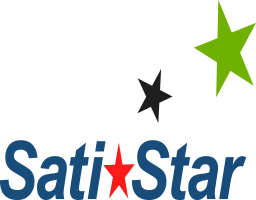Total Productive Maintenance (TPM)
Overview
Total Productive Maintenance is not the same as a maintenance department that repairs breakdowns (breakdown maintenance). TPM is a critical adjunct to lean manufacturing. It is a series of methods, originally pioneered by Nippondenso (a member of the Toyota group), to ensure that every machine in a production process is always able to perform its required tasks so that production is never interrupted.
Total Productive Maintenance (TPM) will turn your maintenance from a repair function to a reliability function. Total Productive Maintenance (TPM) concentrates on getting the productivity needed from your current equipment assets. “Needed” means high overall equipment effectiveness (OEE) measured over the time you need that equipment to meet daily customer demand. Total Productive Maintenance can give you overall equipment effectiveness (OEE) in the mid to upper 90% without major capital expenditures!
Scope And Deliverables
If machine uptime is not predictable and if process capability is not sustained, your operations cannot produce at the velocity of sales. One way to think of TPM is “deterioration prevention”, rather than as “fixing machines”. For this reason many people refer to TPM as “Total Productive Manufacturing” or “Total Process Management”.
Think of productive equipment as we think of our cars or telephones: they are ready to go when we need them, but they need not run all the time to be productive. For this concept to function properly, the machines must be ready when we need them and they must be shut down in such a fashion as to be ready the next time.
Key measures include efficiency while running and quality. Overall Equipment Effectiveness or OEE tells us how TPM is working, not just the typical measures of uptime and throughput.
TPM is a close companion of 5S and uses elements of the visual workplace. Operators know what maintenance tasks are theirs; they also know what tasks are appropriate for the skilled trades maintenance crew. TPM is an empowering philosophy that helps create ownership of the manufacturing process among all employees. Teamwork is vital to the long-term success of TPM.
TPM is much more closely aligned to production than a maintenance department in mass production. One-piece flow with zero defects requires high levels of process capability that, in conjunction with error proofing, allows for the reduction or elimination of inspection.
When variation is reduced to increase process capability, maintenance and operations must be involved to prevent the deterioration of the process capability index. Employee expertise and motivation are essential for TPM to work. If machine downtime is viewed as “good” by operators (because then they don’t have to work), then TPM will fail. If visual cues are ignored, the visual workplace will fail.
TPM also includes the concepts of Preventive Maintenance, Predictive Maintenance, Reliability improvement, faster turnaround for repairs, efficient and cost-effective use of spare parts.
What We Will Do
- Identify the major losses in equipment effectiveness.
- Setup systems to measure Overall Equipment Effectiveness (OEE).
- Facilitate the implementation of the 8 Pillars of TPM.
- Guide the implementation of reactive, preventive, predictive, and proactive maintenance.
- Assist in the implementation of visual controls.
- Provide KPIs that measure machine capacity, ROI, OEE, etc.
What We Need You To Do
- Assign key internal resources to the project.
- Provide us with access to required resources and information in a timely manner.
- Review and approve the TPM team’s recommendations.
- Ensure timely implementation of TPM recommendations.
WHAT PEOPLE ARE SAYING
SatiStar's Experience Makes The Difference!
